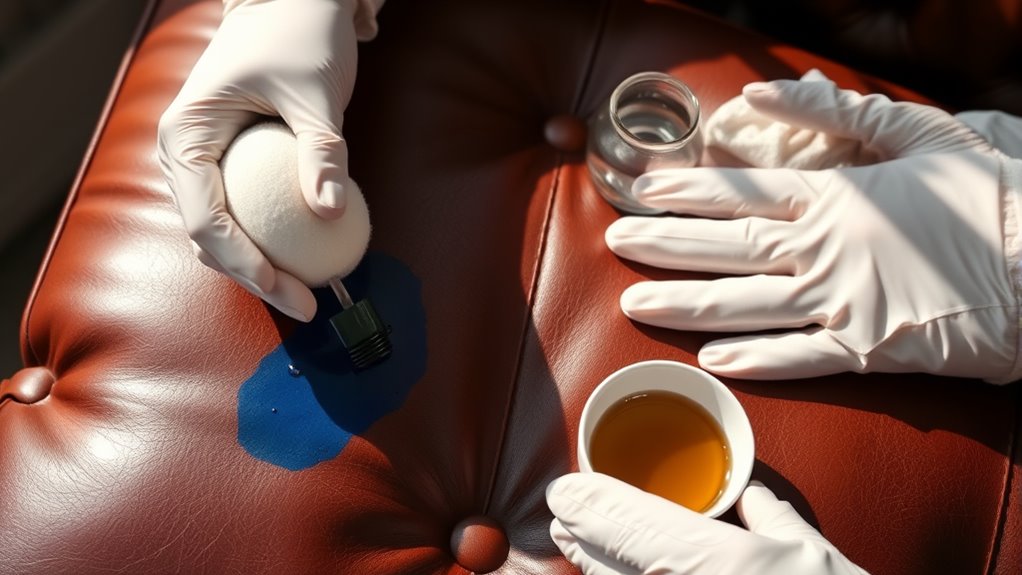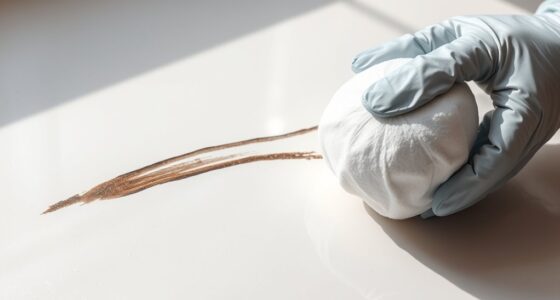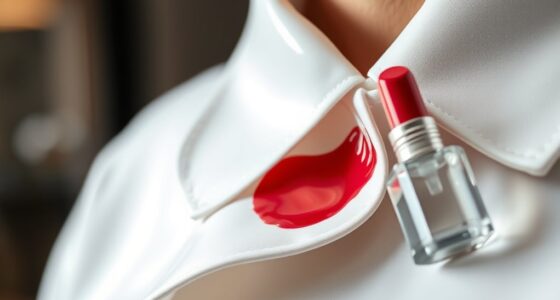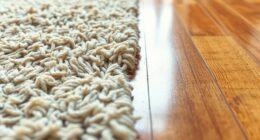To get rid of ink stains on your leather furniture, start by blotting the stain with a clean, dry cloth—don’t rub! Identify the ink type and use a mild soap solution or isopropyl alcohol for stubborn stains. Apply it with a cotton swab and gently blot with a microfiber towel. Always test any cleaner first on an inconspicuous area. After cleaning, condition the leather to restore moisture. Want more tips on keeping your leather looking great?
Key Takeaways
- Blot the ink stain with a clean, dry cloth immediately to absorb excess ink without rubbing.
- Identify the ink type to choose the most effective cleaning method for your leather furniture.
- Use a mild soap solution or isopropyl alcohol on a cotton swab for stubborn stains, applying gently.
- Avoid harsh chemicals and test any cleaning product on an inconspicuous area first to prevent damage.
- After cleaning, apply a leather conditioner to restore moisture and maintain the leather’s appearance.
Understanding Ink Types and Their Impact on Leather
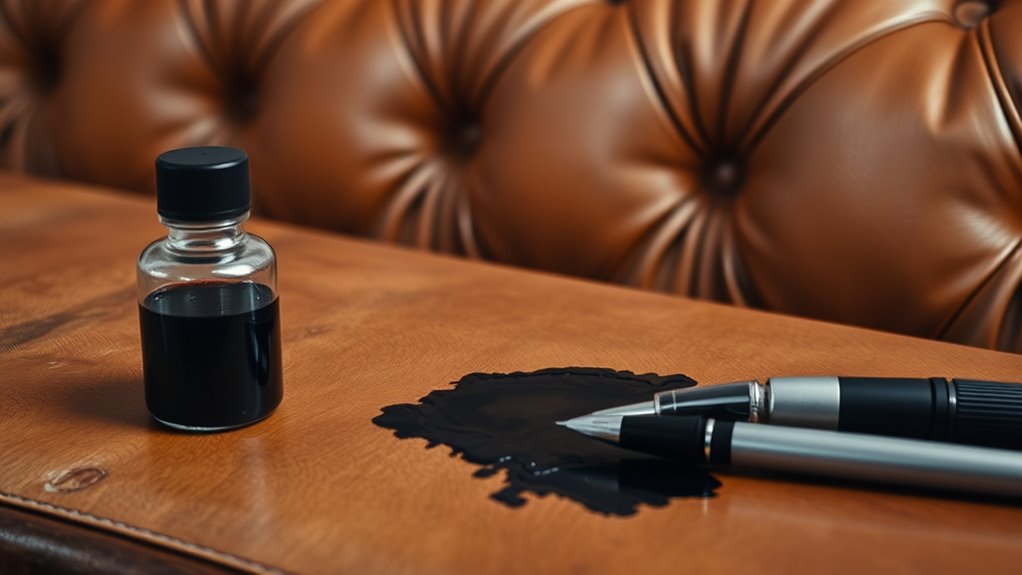
When you encounter an ink stain on your leather furniture, understanding the type of ink involved can considerably impact your cleaning approach.
Ballpoint pen ink is usually easier to manage since it dries quickly. In contrast, Sharpie or permanent marker ink is more challenging due to its penetrating nature. Gel ink, with its vibrant colors, can also cling to leather stubbornly. Fountain pen ink, though less common, can set in if not addressed promptly.
The leather type matters too—aniline leather needs special care while pigmented leather is more resilient. The depth of ink penetration and the age of the stain play significant roles as well. Knowing these factors helps you choose the right cleaning strategy for effective results. Additionally, a dedicated leather care routine is essential for preserving the appearance of your leather furniture.
Immediate Steps to Take After an Ink Spill
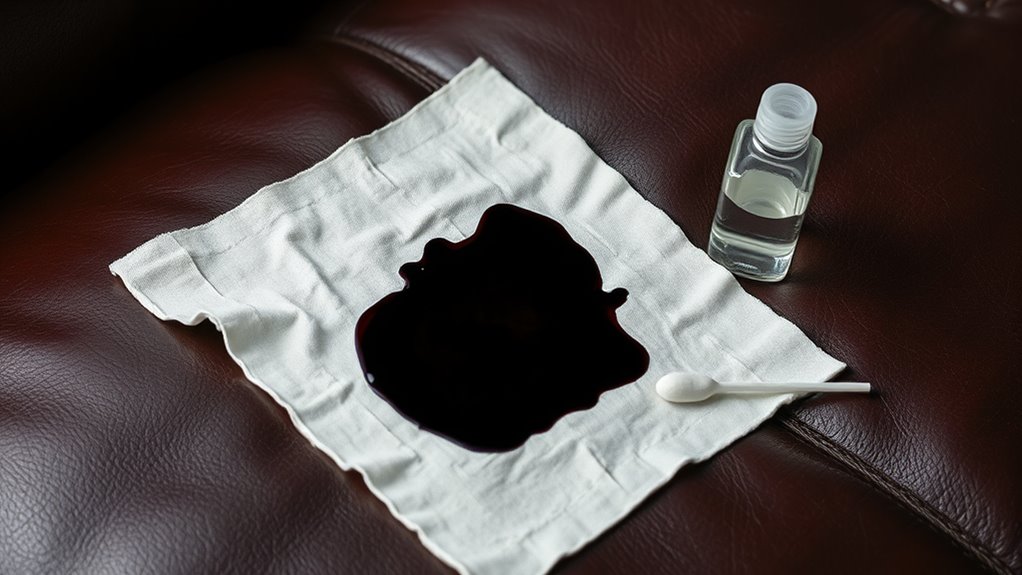
As soon as you notice an ink spill on your leather furniture, it’s essential to act quickly to minimize damage. Start by blotting the stain with a clean, dry cloth or paper towel—don’t rub, as that can spread the ink. Identify the type of ink to tailor your cleaning approach. Gather your cleaning tools, including mild soap, water, or isopropyl alcohol. Assess the extent of the stain to determine your next steps. The sooner you tackle the stain, the easier it’s to remove. Additionally, keep in mind that leather types vary, affecting ink stain removal methods.
Recommended Cleaning Methods for Ink Stains

To effectively tackle ink stains on leather furniture, you’ll want to choose the right cleaning method tailored to the type of leather and the extent of the stain. For light stains, start with a mild soap solution or a vinegar mixture of equal parts vinegar and water. If the stain is stubborn, consider using isopropyl alcohol or a dedicated ink remover for safer results. Applying these solutions with a cotton swab for precision, then gently blotting with a microfiber towel is advised, as quick cleanup prevents stains from setting in. Avoid scrubbing, as it may damage the leather. After the stain is removed, don’t forget to apply a leather conditioner to restore moisture and protect against future stains. Regular maintenance is key to keeping your leather looking its best.
Safety Precautions When Cleaning Leather
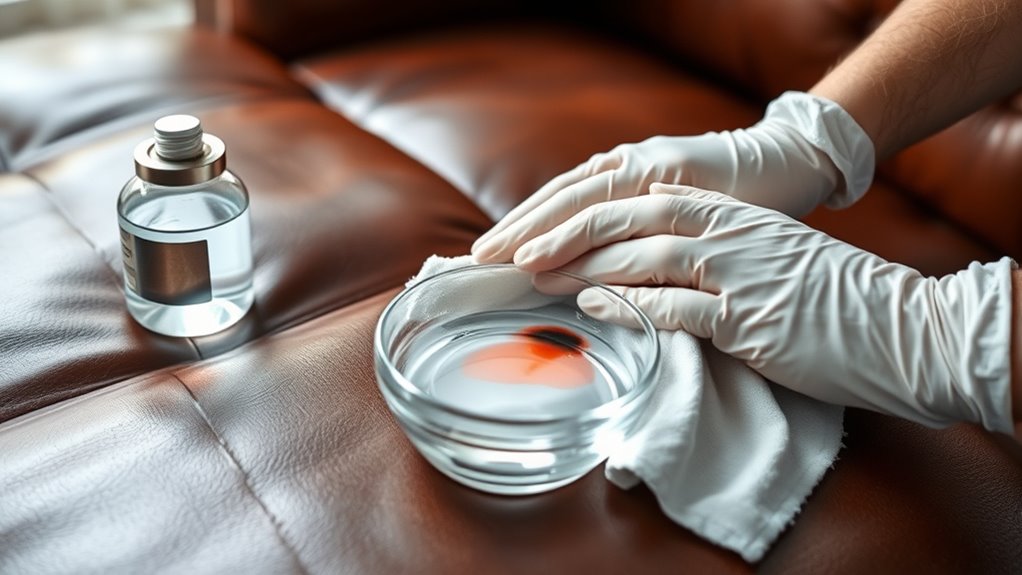
Cleaning ink stains from leather furniture requires not just the right techniques but also important safety precautions.
First, avoid harsh chemicals like ammonia or bleach, as they strip leather of its natural oils. Use a damp cloth instead of soaking the leather to prevent damage. Always test any cleaning product on a small, inconspicuous area first.
Protect your leather by keeping it out of direct sunlight, which can cause fading and brittleness. Use gentle blotting motions rather than scrubbing to avoid scratches. Choose soft, cotton-based cloths for cleaning, and spot clean only the stained area. Regular care and maintenance can significantly prevent loss of value over time.
Finally, remember to condition the leather after cleaning to maintain its moisture and appearance. These precautions will help preserve your leather furniture’s beauty.
When to Seek Professional Cleaning Services
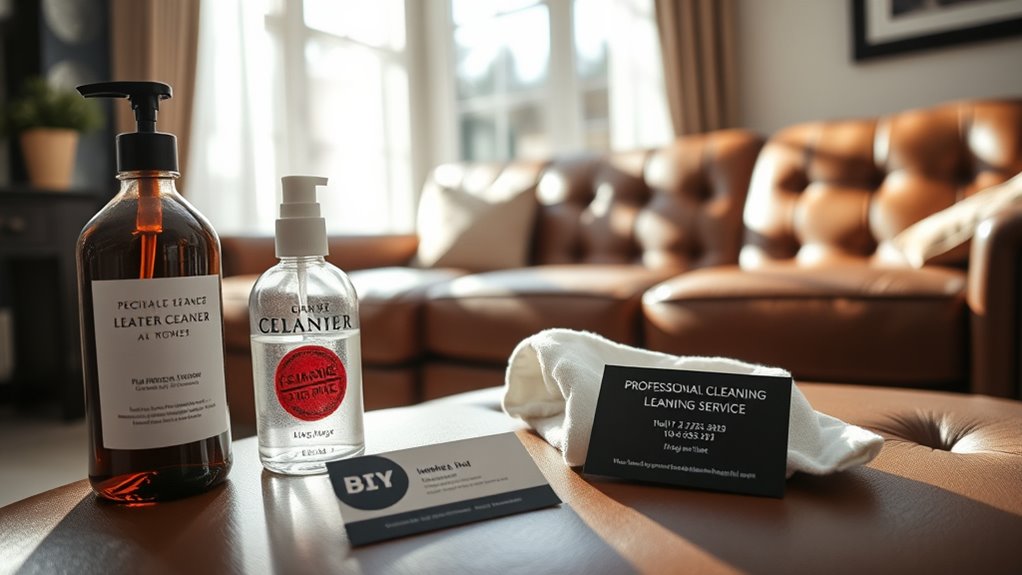
If you find yourself struggling with stubborn ink stains on your leather furniture, it might be time to contemplate professional cleaning services. Deeply embedded stains or those that have lingered for a while can cause more damage if you attempt to remove them yourself. If your leather is high-quality or exotic, professionals can help preserve its value and condition. Have your DIY methods failed? It’s a clear sign that seeking expert help is essential. Delicate leathers like aniline or suede require specialized care that pros are equipped to handle. Quick action is crucial for successful ink stain removal, and professionals know how to treat these stains effectively. They not only remove stains effectively but also restore the leather’s appearance. By hiring professionals, you guarantee the longevity and quality of your valuable furniture.
Tips for Preventing Future Ink Stains on Leather Furniture
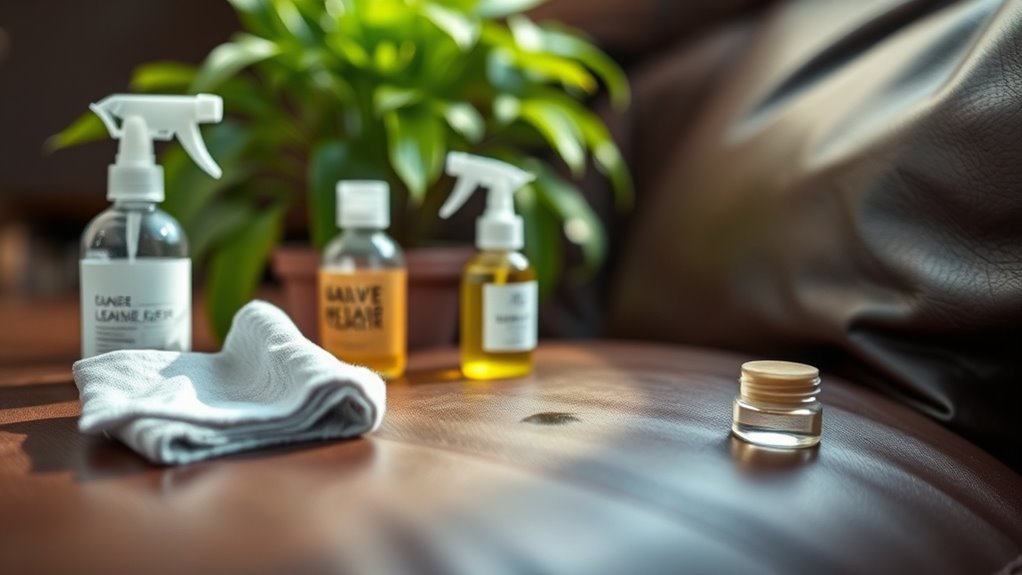
After addressing stubborn ink stains with professional help, it’s important to focus on prevention to protect your leather furniture from future damage.
Regularly clean your leather to prevent dirt buildup and apply protective coatings to enhance stain resistance. Keep sharp objects away to avoid scratches that can attract stains. Utilize leather conditioners to maintain moisture and suppleness, as this helps to prevent drying that can make the leather more susceptible to stains.
Consider applying stain repellents specifically designed for leather. When spills happen, act quickly by blotting with clean, absorbent materials and avoid rubbing to prevent spreading.
Always test any cleaner on an inconspicuous area first and use undyed cloths to avoid dye transfer. By following these tips, you can keep your leather furniture looking great and free from ink stains.
Frequently Asked Questions
Can I Use Baby Wipes to Clean Ink Stains on Leather?
You might wonder if baby wipes can clean ink stains on leather. While they seem convenient, they’re not widely recommended for this purpose.
They may not be gentle enough and could leave residue, potentially damaging the leather. Instead, consider using isopropyl alcohol or mild soap and water, as these methods are more effective.
Always test a hidden area first to avoid discoloration, and follow up with a leather conditioner for best results.
Is There a Specific Leather Conditioner to Use After Cleaning?
You might think any conditioner will do, but using the right leather conditioner is essential for maintaining your furniture’s quality.
After cleaning, go for a specialized leather conditioner, like Leather Honey, which restores moisture and color effectively.
Make sure it’s compatible with your leather type for the best results.
Apply it generously, let it soak in, and then buff gently to keep your leather looking fresh and protected for years to come.
How Long Should I Wait Before Applying Conditioner After Cleaning?
After cleaning, you should wait about 10 to 15 minutes before applying conditioner to your leather. This allows the surface to dry slightly, ensuring that the conditioner penetrates effectively.
Make sure the area feels dry to the touch—this helps avoid trapping moisture under the conditioner.
Once you apply it, remember to buff the leather gently for a nice finish.
Regular conditioning keeps your leather looking great and prevents future damage.
Will Ink Stains Always Leave a Mark on Leather Furniture?
“An ounce of prevention is worth a pound of cure.”
Ink stains on leather furniture can sometimes leave a mark, especially if they’re not treated quickly. The type of leather and ink involved plays a significant role in this outcome.
Fresh stains are generally easier to remove, while older ones might set permanently. To minimize risk, act fast and use appropriate cleaning methods to protect your leather.
Can I Prevent Ink Stains With Leather Covers or Throws?
Yes, you can prevent ink stains with leather covers or throws.
Covers provide extensive protection, guarding your furniture against spills and stains effectively. They’re easy to clean and can be replaced if necessary.
Throws, while decorative, offer only partial protection and may slip, leaving areas exposed.
If you want the best defense against ink stains, opt for high-quality leather covers to keep your furniture looking pristine and lasting longer.
Conclusion
Don’t let ink stains ruin your beautiful leather furniture! While it might feel overwhelming to tackle these pesky marks, remember that quick action and the right methods can restore your piece to its former glory. Even if you’re worried about damaging the leather, gentle techniques can work wonders without compromising its integrity. With a little patience and care, you can keep your furniture looking pristine and enjoy it for years to come. Take charge—your leather deserves it!
